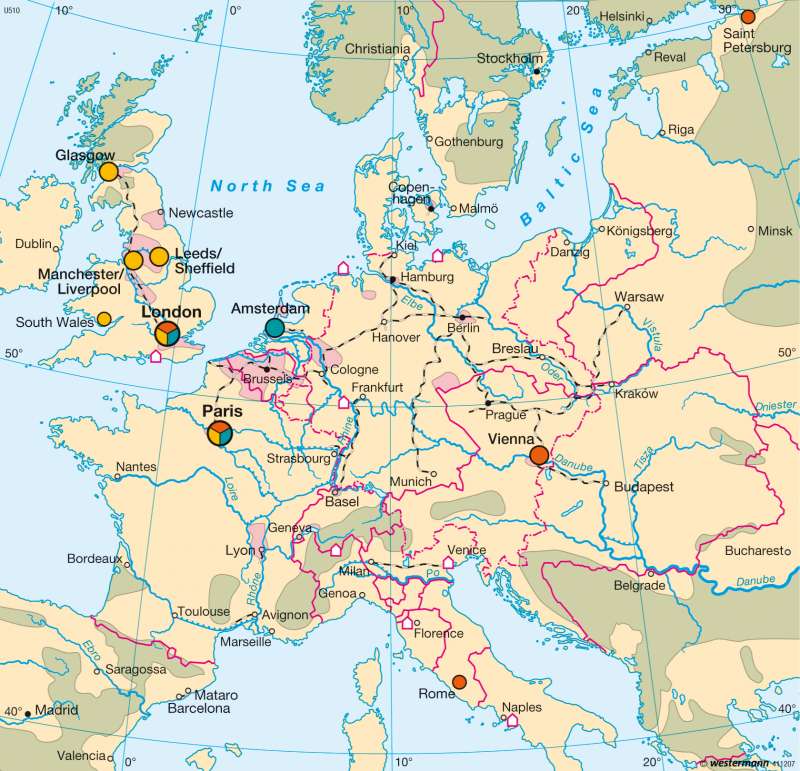Industrial centres circa 1850
Europe - Economy
978-3-14-100790-9 | Page 50 | Ill. 1

Information
In the middle of the 19th century, the beginnings of industrialization already lay a few decades in the past. But the Industrial Revolution had not yet pervaded Europe's economic structure. Only a small number of conurbations were affected by far-reaching changes.Structure of the Economy
Around 1850, agriculture reigned supreme as the most important sector of the economy throughout Europe. In many parts of the continent, landscapes still existed in their natural state, scarcely or not at all used by man — for example the Alps, the Pyrenees and the Scandinavian Mountains.
In some countries industrial centres had emerged, which are characterized today as old industrialized regions. Industrialization had the greatest influence in Great Britain, the cradle of the Industrial Revolution. The population felt the effects of the new era especially in the Midlands, around the cities of Manchester, Liverpool and Birmingham, and in the coalfields around Newcastle. The Midlands were linked to London by canal and railway. A corridor of industry developed along this connection.
On the mainland, the Belgian coalfields and the Ruhr Area (Ruhrgebiet) were the leading industrial centres. Berlin, Saxony and Lyon among others were also important centres of industry.
The railway network was still in its infancy. The first steam locomotives operated in France in 1831 and in the same year a line was opened in the Ruhr Area — even before the famous connection between Nuremberg and Fürth on which the locomotive "Adler" ran in 1835.
Main Centres
Even before industrialization, London was one of the most important cities in Europe. In the middle of the 19th century 2.6 million people lived there, making London the largest city in the world. It was of global significance in the fields of politics, culture, finance and innovation. Only Paris was of comparable rank, with a population of around one million at that time.
Alongside these cities, the continent had other important centres, which however were not of global relevance but only played a role at the continental level. In Great Britain, these were the industrial centres of Glasgow and Manchester. In the Netherlands there was the financial centre of Amsterdam. Vienna was very important for both politics and culture. Below these in the hierarchy came Cardiff (industry) as well as St. Petersburg and Rome (in both cases politics and culture).
The map also shows the major tourist destinations. At that time, tourism was not yet a mass phenomenon but the privilege of the wealthy. They relaxed on the coasts of the North Sea and the Baltic, sought edification on the trail of Italian culture in Venice, Florence and Naples, took care of their health in the Alps, or dedicated themselves to dreams of wild romanticism in the Middle Rhine Valley. The still small numbers of visitors did not play any significant financial role for the tourist regions.
D. Falk; Ü: J. Attfield




